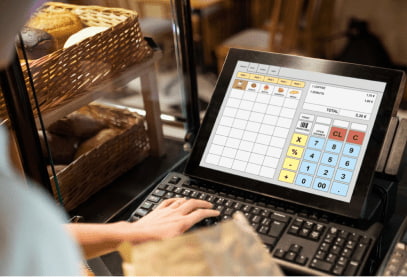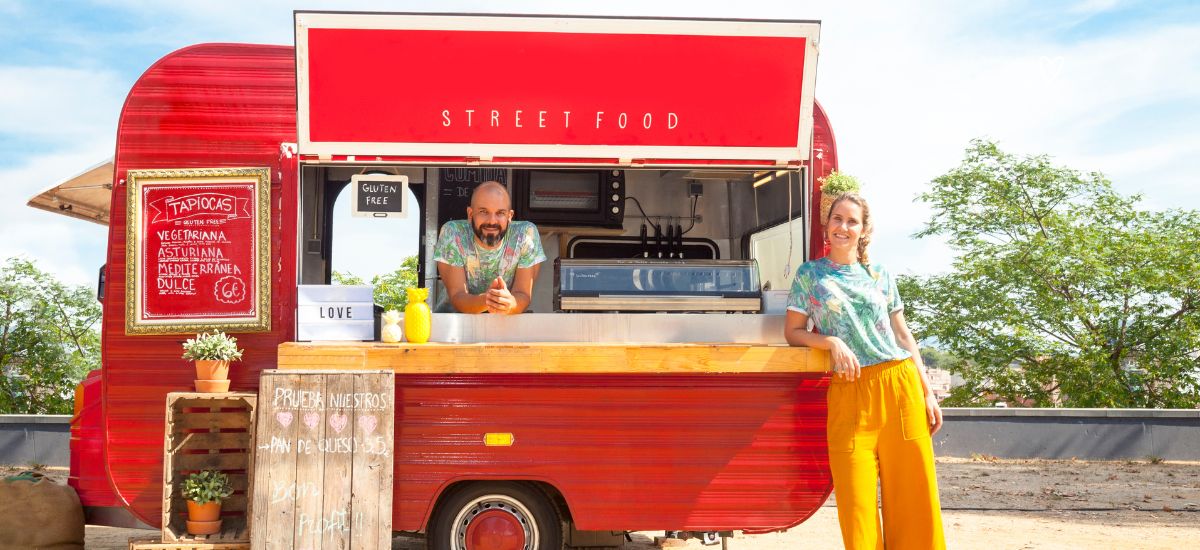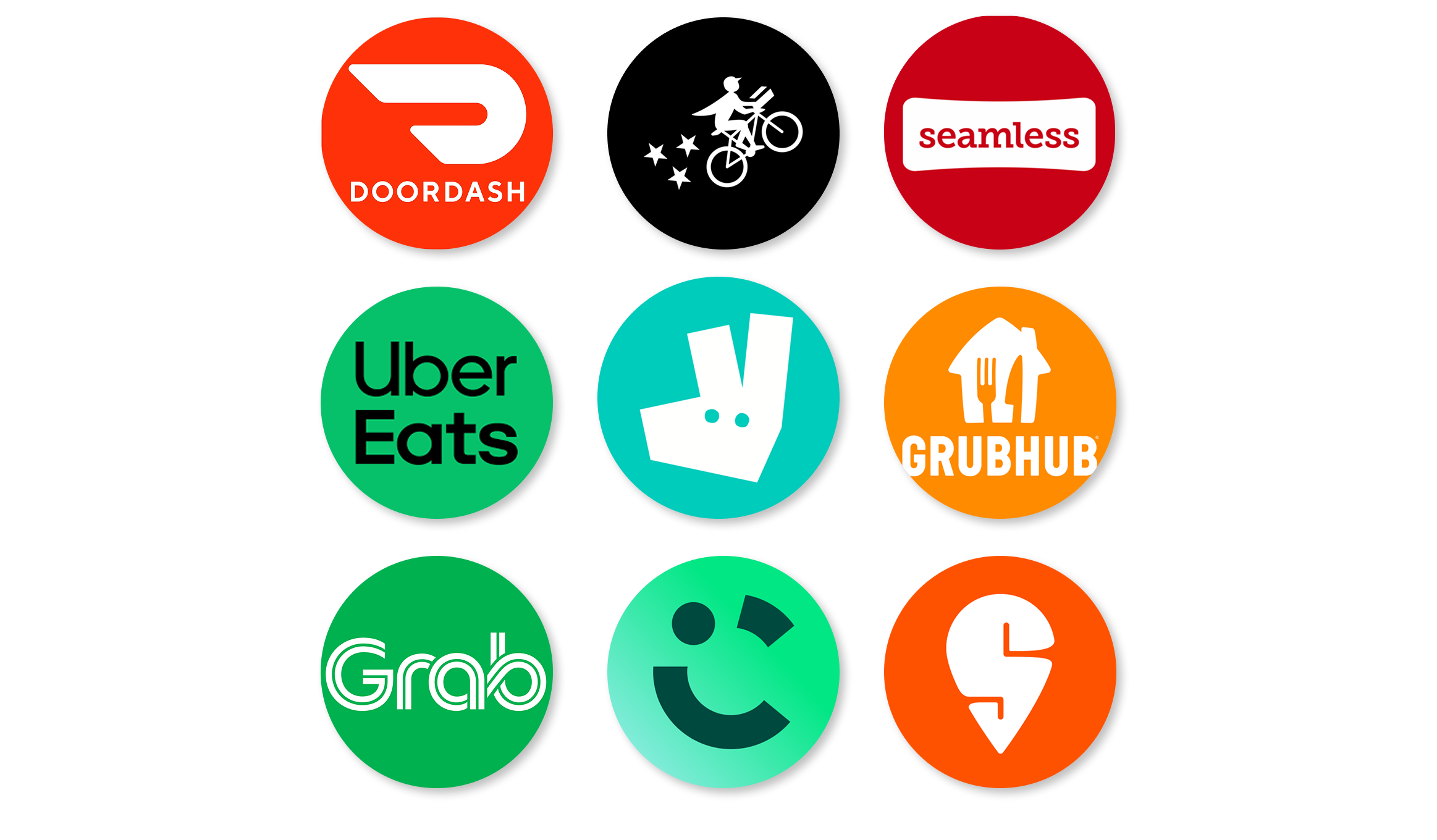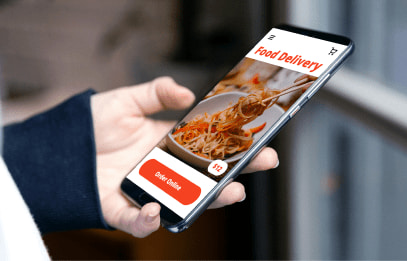Key Takeaways
- Choose technology that eliminates commissions and provides complete data ownership
- Design a menu specifically optimized for delivery quality and operational efficiency
- Implement efficient delivery operations, whether through self-delivery or strategic partnerships
- Build a strong digital brand presence to attract and retain customers
- Partner with Restolabs for a seamless online ordering experience that maximizes profits
In a world dominated by digitization, starting an online restaurant or virtual food business has become a profitable venture that's completely transforming the restaurant industry. If you're feeling overwhelmed by technology choices or anxious about costs and compliance, you're not alone. Many restaurant owners share these concerns when taking their first steps into the digital space.
The good news? Starting a virtual restaurant is more accessible than you might think. Whether you're looking to launch a new online food business from scratch or transition your existing restaurant to the digital realm, this comprehensive guide will walk you through the entire process in three manageable steps.
With the ghost kitchen market projected to reach $71.4 billion by 2027 according to Statista, now is the ideal time to enter this rapidly growing space. The pandemic accelerated the shift to delivery-focused dining, with 60% of U.S. consumers now ordering delivery or takeout at least once a week—a trend that continues to grow even as in-person dining returns.
The complete process involves selecting the right technology platform, designing a delivery-optimized menu, establishing efficient delivery operations, and implementing targeted marketing strategies. Each step builds upon the previous one to create a sustainable, profitable virtual restaurant business that can thrive in today's digital-first food landscape.
What is an Online or Virtual Restaurant?
An online or virtual restaurant (sometimes called a ghost kitchen or cloud kitchen) operates primarily in the digital space. These are commercial kitchens without traditional dine-in spaces that receive orders exclusively online and focus on food delivery. The concept has gained tremendous popularity for several compelling reasons:
- Higher profit margins: Virtual restaurants can retain 100% of their profits by avoiding the hefty commissions charged by third-party platforms
- Lower overhead costs: Without the need for front-of-house staff, expensive real estate, or dining room furnishings, operational costs are significantly reduced
- Flexibility in location: You can operate from areas with lower rent since customer-facing aesthetics aren't a priority
- Broader customer reach: Your potential customer base extends far beyond the physical limitations of a traditional restaurant
The future of the restaurant industry increasingly lies in online ordering, and establishing a strong digital presence is essential for any food business today. Let's explore how you can successfully enter this space with a systematic approach.
Virtual Restaurant vs. Ghost Kitchen vs. Cloud Kitchen: Understanding the Differences
While often used interchangeably, these terms refer to distinct business models that serve different operational goals:
Your business goals should determine which model is right for you. If you already operate a restaurant with excess kitchen capacity, launching a virtual restaurant brand is often the most cost-effective approach. For entrepreneurs without existing facilities, renting space in a cloud kitchen provides access to commercial equipment without major capital investment. As your virtual concept grows, transitioning to a dedicated ghost kitchen can provide the space needed for expansion.
Benefits of Going Virtual
The virtual restaurant model offers compelling advantages that make it an attractive option for both established restaurateurs and first-time entrepreneurs. Understanding these benefits can help you determine if this business model aligns with your goals and resources.
- Lower startup and operational costs: Without the need for prime real estate, dining furniture, front-of-house staff, or expensive signage, virtual restaurants typically require 50-75% less initial investment than traditional restaurants.
- Reduced overhead expenses: Virtual restaurants eliminate costs associated with dining areas, including utilities, cleaning, maintenance, and decor refreshes, allowing more budget for quality ingredients and marketing.
- Flexible location options: You can operate from industrial areas with lower rent since customer-facing aesthetics don't matter, making previously "undesirable" locations viable for food businesses.
- Menu experimentation freedom: Test new concepts, cuisines, or dishes without the risk and expense of a full restaurant launch. This agility allows you to quickly pivot based on market feedback.
- Multiple brand opportunities: Run several virtual restaurant concepts from a single kitchen, maximizing your equipment usage and targeting different customer segments with distinct menus.
- Streamlined operations: With a delivery-only model, you can focus exclusively on food preparation and quality control without managing dine-in service complexities.
- Data-driven decision making: Online ordering systems provide rich customer data and ordering patterns that enable precise menu optimization and marketing strategies.
- Scalability potential: Once you've established a successful concept, you can easily expand to multiple locations or ghost kitchens without the traditional constraints of restaurant growth.
The virtual restaurant model provides a lower-risk entry point into the food industry while offering significant growth potential for those who execute effectively. With the right technology, menu, and marketing approach, virtual restaurants can achieve profitability faster than traditional establishments.
Step 1: Choose a Commission-Free Online Ordering System
The foundation of your online food business is a reliable, efficient online ordering system. With numerous options available, selecting the right platform can feel daunting. Many restaurant owners worry about making the wrong choice and losing money on fees. However, focusing on a commission-free system is the key to maximizing your profits and maintaining control over your business.
Investing in a robust commission-free online ordering system that provides a branded website while enabling personalized customer experiences is crucial in today's competitive market. While most providers offer free trial periods lasting 14-30 days, it's wise to conduct thorough research before making your decision. Success in online ordering often comes down to getting the UI/UX must-haves right, so customers can navigate and place orders with ease.
Key Features to Look For in Your Online Ordering Platform
When evaluating online ordering systems for your virtual restaurant, prioritize these essential features:
Reviews and Reputation
Before narrowing down your options, investigate the websites of different online ordering systems. Look for testimonials from successful restaurants and positive reviews regarding user experience. A system with a proven track record of supporting restaurants similar to your concept will likely be a better fit for your needs.
Contactless Ordering Capabilities
In today's health-conscious environment, contactless ordering has become essential. Your online ordering system should provide options for contactless ordering and delivery through your website or mobile app. If you eventually add a dine-in option, the same provider should offer QR technology for tableside ordering.
Device Compatibility
An effective online ordering system must be accessible across all devices. Your staff should be able to manage orders on the go from their preferred devices, while customers need the flexibility to place orders seamlessly from anywhere, anytime—whether using iOS or Android, on small or large screens, desktop or laptop.
Diverse Payment Options
To maximize conversions and improve customer experience, ensure your online ordering system supports various payment methods, including debit cards, credit cards, digital wallets, and cash on delivery. The more payment options you offer, the fewer barriers customers face when placing orders.
Comprehensive Analytics
Data-driven decision making is vital for growth. A quality online ordering system should provide detailed analytics on customer behavior, product performance, and sales patterns. These insights will help you develop informed marketing strategies and operational improvements.
Streamlined Onboarding Process
Adopting new technology shouldn't be a struggle. Look for a provider with a responsive support team available 24/7 to help you set up and optimize your system. The entire process of implementing your online restaurant ordering system should be seamless, with quality support to help you maximize its potential.
Commission-Free Structure
Perhaps most importantly, choose a system that doesn't charge per-order commissions. Third-party delivery apps often take 15-30% of each order, dramatically reducing your profit margins. A commission-free system allows you to keep 100% of your sales revenue, which is essential for sustainable growth.
Complete Technology Stack for Virtual Restaurants
While a commission-free online ordering system forms the foundation of your virtual restaurant, a complete technology stack includes several integrated components that work together to streamline operations:
Must-Have Technology Features Checklist
When evaluating technology providers for your virtual restaurant, ensure they offer these essential capabilities:
- Seamless multi-platform integration that connects your ordering system, POS, and delivery management
- Real-time inventory synchronization to prevent selling out-of-stock items
- Automated order confirmation via email and SMS to keep customers informed
- Customer data collection and analytics for personalized marketing and menu optimization
- Menu management tools that allow quick updates across all platforms
- Mobile optimization for customers ordering from smartphones
- Customizable branded experience that reinforces your restaurant's identity
- Flexible payment processing with multiple options for customers
While building your technology stack, prioritize systems that offer open APIs and established integrations with other restaurant technologies. This approach provides flexibility as your business grows and prevents being locked into proprietary ecosystems that limit your options.
Step 2: Design a Delivery-Optimized Menu
Creating a menu specifically designed for delivery is crucial for your online food business. Typically, a delivery-specific menu is a streamlined version of a traditional restaurant menu, carefully curated to ensure food quality isn't compromised during transport.
Optimizing your menu for food delivery requires considering multiple factors such as preparation time, temperature stability, and texture preservation. Each item should maintain its quality and appeal for at least 40 minutes—the average time it might take to reach customers.
Packaging and Food Quality Considerations
When designing your delivery-optimized menu, pay special attention to these packaging and quality factors:
- Temperature maintenance: Use appropriate containers that keep hot foods hot and cold foods cold
- Moisture control: Implement packaging solutions that prevent items from becoming soggy or dried out
- Separation of components: Package sauces, dressings, and toppings separately when necessary to maintain food integrity
- Eco-friendly options: Consider sustainable packaging that appeals to environmentally conscious customers
- Branded presentation: Use packaging that reinforces your brand identity and enhances the customer experience
Take time to test different packaging options for your menu items and gradually refine your offerings to include only those that travel well. One effective strategy to reduce costs is to feature items that share common ingredients, which helps minimize food wastage and simplifies inventory management.
Position your high-margin items prominently in your menu to attract attention. Include high-quality images and appetizing descriptions that help customers visualize the experience. Keep your menu description focused on popular, delivery-friendly dishes rather than overwhelming customers with too many options.
Menu Engineering for Virtual Success
Strategic menu engineering can significantly impact your virtual restaurant's profitability and customer satisfaction. Consider these advanced techniques when developing your delivery menu:
Data-Driven Menu Optimization
Once your virtual restaurant is operational, use ordering data to continuously refine your menu:
- Analyze item performance by tracking sales volume, profit margins, and customer ratings for each dish
- Identify your "stars" (high-profit, high-popularity items) and position them prominently
- Eliminate "dogs" (low-profit, low-popularity items) that complicate operations without contributing significantly to revenue
- Test price elasticity by making small adjustments to understand how sensitive your customers are to price changes
Upsell and Cross-Sell Strategies
Increase your average order value with these proven techniques:
- Create logical meal bundles that combine complementary items at a slight discount
- Develop a tiered pricing structure with standard, premium, and deluxe versions of popular items
- Suggest relevant add-ons during the checkout process (e.g., drinks, sides, desserts)
- Implement minimum order thresholds for free delivery to encourage larger purchases
Menu Testing and Iteration
Before fully launching your menu, conduct thorough testing:
- Perform delivery simulations by packaging items and waiting 30-45 minutes before checking quality
- Gather feedback from test customers on taste, temperature, and presentation after delivery
- Photograph items after typical delivery times to ensure they remain visually appealing
Iterate based on feedback by adjusting ingredients, preparation methods, or packaging
Step 3: Set Up Efficient Self-Delivery or Driver Partnerships
Once your online ordering system is operational and your menu is optimized for delivery, it's time to establish an efficient delivery process. The most cost-effective approach is typically setting up self-delivery for your restaurant.
While partnering with third-party delivery services is common, their commission rates can reach up to 30% per order. These substantial fees quickly accumulate and significantly reduce your profit margins. By contrast, managing your own delivery operations can reduce delivery costs by up to 50%, directly increasing your revenue.
To implement an effective self-delivery system:
- Start by hiring a small team of drivers, expanding as order volume increases
- Decide whether drivers will use their own vehicles (with compensation) or company-provided transportation
- Develop clear delivery zones based on reasonable travel times to maintain food quality
- Create standardized training for proper food handling, customer service, and representing your brand
- Implement a tracking system that keeps customers informed about their order status
If you choose to charge customers a delivery fee, keep it reasonable while ensuring it contributes to covering your delivery costs. The key advantage of self-delivery is maintaining complete control over the customer experience from online ordering through meal preparation to final delivery.
Advanced Delivery Operations Strategies
As your virtual restaurant grows, implementing sophisticated delivery operations becomes essential for maintaining quality and efficiency.
Establishing Strategic Delivery Zones
Define your delivery radius based on these critical factors:
- Food quality preservation: Limit delivery distance to ensure food arrives at proper temperature and texture
- Driver efficiency: Consider traffic patterns, natural boundaries, and population density
- Competitor analysis: Identify underserved areas where you can fill a market gap
- Dynamic adjustment: Expand or contract zones based on order volume and staff availability
Many successful virtual restaurants start with a 3-5 mile radius and gradually expand as operations stabilize. Use heat mapping tools to visualize where your orders originate and adjust zones accordingly.
Implementing Hybrid Delivery Models
Rather than choosing exclusively between self-delivery and third-party services, consider a hybrid approach:
- Self-delivery for core zones where order density justifies dedicated drivers
- Third-party partnerships for extended areas to reach customers beyond your primary radius
- Special event catering with dedicated delivery for large orders with advance notice
- Pickup options for customers who prefer to collect their own orders (often at discounted prices)
This flexible approach maximizes your reach while controlling costs in your highest-volume areas.
Managing Multiple Delivery Platforms
When working with multiple delivery services, implement these best practices:
- Use tablet consolidation technology to funnel all platform orders into a single system
- Standardize menus across platforms to maintain consistency and simplify operations
- Adjust pricing on third-party platforms to account for their commission structures
- Track platform-specific performance metrics to identify which services drive the most value
- Develop migration strategies to convert platform customers to your direct ordering system
Customer Communication Best Practices
Clear communication throughout the delivery process significantly improves customer satisfaction:
- Provide accurate delivery time estimates based on current kitchen volume and driver availability
- Implement automated status updates via text or email at key points (order received, preparation started, out for delivery)
- Include delivery instructions field for customers to provide specific location details
- Establish a clear issue resolution process for addressing delivery problems quickly
How to Start an Online Food Business from Home
For entrepreneurs looking to minimize initial investment, starting a virtual restaurant from home can be an attractive option. However, this approach requires careful planning and adherence to legal requirements.
Legal Permits and Compliance
Before launching your home-based online food business, you'll need to secure several permits and licenses:
- Business license: Register your business with local authorities
- Food handler's permit: Complete required food safety training
- Home kitchen certification: Many jurisdictions have specific requirements for commercial food preparation in residential kitchens
- Health department inspection: Your kitchen must pass health and safety standards
- Zoning permits: Ensure your residential area allows for commercial food preparation
- Insurance coverage: Obtain appropriate liability insurance for food businesses
Requirements vary significantly by location, so research your local regulations thoroughly. Some areas have cottage food laws that provide more flexibility for home-based food businesses, while others may have strict limitations on what can be prepared in a residential kitchen.
Kitchen Setup and Equipment
Creating an efficient home kitchen for your online food business requires careful planning:
- Dedicated space: Designate a specific area solely for commercial food preparation
- Commercial-grade equipment: Invest in reliable appliances that can handle consistent production
- Storage solutions: Ensure adequate space for ingredients, packaging, and prepared items
- Food safety measures: Install proper handwashing stations and sanitizing areas
- Efficient workflow: Arrange your kitchen to minimize movement and maximize productivity
Even with limited space, you can create a functional commercial kitchen by focusing on efficiency and organization. Prioritize equipment that serves multiple purposes and consider preparation methods that maximize your available resources.
Marketing Your Online Restaurant to Grow Sales
With your virtual restaurant operational, effective marketing becomes essential for attracting and retaining customers. Unlike traditional restaurants that benefit from physical visibility, online food businesses must actively build their digital presence.
Implement these proven marketing strategies to grow your customer base:
- Social media presence: Create engaging profiles on platforms where your target customers spend time. Share appetizing food photos, behind-the-scenes content, and special offers regularly.
- Email marketing: Build a customer database and send regular newsletters with promotions, menu updates, and exclusive offers to encourage repeat orders.
- Local SEO: Optimize your website for local search terms to ensure people in your delivery area can find you when searching for food options.
- Loyalty program: Implement a digital loyalty program that rewards repeat customers with discounts, free items, or early access to new menu items.
- Community engagement: Partner with local businesses, sponsor community events, or offer special promotions for local organizations to build awareness.
Consistently collect and respond to customer feedback to refine your offerings and address any service issues promptly. Positive online reviews are particularly valuable for virtual restaurants, so actively encourage satisfied customers to share their experiences.
Branding and Marketing Your Virtual Restaurant
Without a physical storefront to attract customers, your virtual restaurant's digital presence becomes the primary way potential customers discover and engage with your brand. A comprehensive marketing strategy is essential for standing out in the competitive online food space.
Building a Distinctive Brand Identity
Your virtual restaurant's brand identity should be memorable, authentic, and aligned with your target audience:
- Develop a compelling brand story that explains your concept's origin and what makes it special
- Create a distinctive visual identity with a professional logo, consistent color palette, and typography
- Establish a clear brand voice that resonates with your target audience across all communications
- Design professional packaging with your branding that enhances the delivery experience
- Craft a memorable restaurant name that's easy to spell, search for, and remember
Establishing a Strong Digital Presence
Your online presence serves as your virtual storefront and should be designed to convert visitors into customers:
- Build a mobile-optimized website with your menu, ordering functionality, and brand story
- Claim and optimize Google My Business listing with accurate information and appealing photos
- Create profiles on relevant social platforms where your target audience spends time
- Develop a content calendar for consistent posting across channels
- Invest in professional food photography that showcases your dishes at their best
Effective Launch Campaign Strategies
Generate excitement and initial orders with these proven launch tactics:
- Pre-launch email collection to build an audience before you open
- Limited-time opening specials to encourage first-time orders
- Influencer partnerships with local food bloggers or social media personalities
- Press outreach to local food publications and news outlets
- Targeted digital advertising on platforms like Instagram, Facebook, and Google
Building Social Proof and Trust
Encourage and leverage positive customer experiences to build credibility:
- Implement a review collection system that prompts satisfied customers to share feedback
- Showcase testimonials prominently on your website and social media
- Respond promptly to all reviews (positive and negative) to demonstrate customer care
- Share user-generated content of customers enjoying your food
- Display any relevant certifications or awards that build credibility
Community Engagement Strategies
Build lasting relationships with your local community to develop a loyal customer base:
- Partner with local businesses for cross-promotion opportunities
- Support community events through food donations or sponsorships
- Create loyalty programs that reward repeat customers
- Host virtual cooking demonstrations or behind-the-scenes kitchen tours
- Engage with local social media groups where food recommendations are shared
Ready to Transform Your Restaurant with Mobile Ordering?
Mobile ordering is a complete solution—it not only drives more orders but also enhances operations, reduces waste, and streamlines scheduling. A mobile app gives you a direct communication channel with customers through push notifications, maintaining brand visibility and engagement.
The data is clear: customers spend 28% more on branded apps than on third-party platforms. Plus, you gain access to valuable first-party data to continually optimize menus and marketing strategies.
While adopting a mobile ordering app requires planning and investment, the returns in revenue, efficiency, and loyalty make it a must-have for modern restaurants.
Want to see how Restolabs can transform your restaurant? Book a free demo to talk to one of our online ordering specialists today!
With smartphone usage on the rise and customers demanding convenience, now is the time for restaurants to embrace mobile technology and prepare for a more profitable, digital-first future.
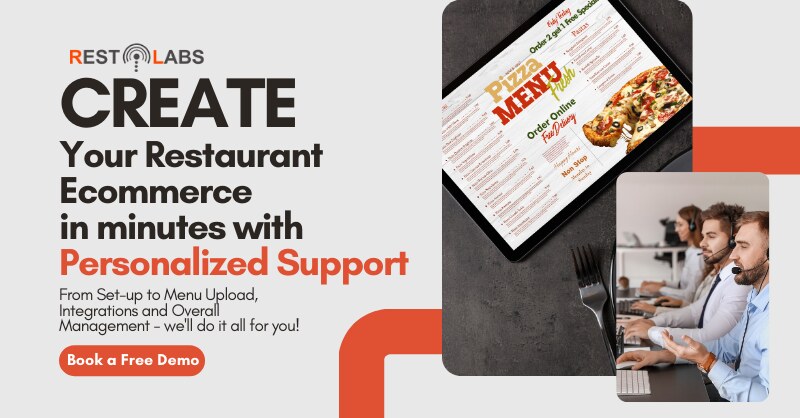
Frequently Asked Questions
To start an online food business from home, you'll typically need a business license, food handler's permit, home kitchen certification, and pass health department inspections. Many jurisdictions have specific requirements for commercial food preparation in residential kitchens, sometimes called "cottage food laws." Contact your local health department and business licensing office to understand the specific requirements in your area, as regulations vary significantly by location. You'll also need appropriate liability insurance coverage for food businesses.
To keep delivery costs low while maintaining quality, implement a self-delivery model rather than relying on third-party services that charge high commissions. Hire your own drivers and optimize delivery routes to maximize efficiency. Use high-quality, insulated packaging that maintains food temperature and integrity during transit. Define reasonable delivery zones based on travel time to ensure food arrives in optimal condition. Consider batch deliveries when possible, and implement a minimum order amount for free delivery to ensure profitability. Finally, regularly review your delivery performance metrics to identify opportunities for improvement.
When selecting an online ordering system, prioritize a commission-free structure that allows you to keep 100% of your sales. Look for mobile-friendly interfaces, comprehensive analytics to track customer behavior and sales patterns, multiple payment options, and reliable customer support. The system should offer menu customization capabilities, integration with your existing POS system, and marketing tools to help grow your business. Also important are features like automated order confirmation, real-time order tracking, and the ability to manage multiple locations if you plan to expand.
To design a delivery-optimized menu, focus on foods that maintain their quality during transit. Select items that travel well without becoming soggy, wilted, or temperature-compromised. Simplify your menu to include fewer, high-quality options rather than an overwhelming selection. Package components separately when necessary (like dressings, sauces, or toppings) to maintain food integrity. Use clear, appetizing descriptions and high-quality images to help customers visualize the experience. Consider offering meal bundles or family packages that increase average order value while simplifying preparation. Regularly test your menu items by ordering them yourself to experience what customers receive.
The key steps to starting an online restaurant include selecting a commission-free online ordering system, designing a delivery-optimized menu, and establishing an efficient delivery process. You'll need to secure necessary permits and licenses, set up a proper kitchen space (commercial or certified home kitchen), and develop a strong brand identity. Create a marketing strategy focused on digital channels to attract customers, and implement systems to collect feedback for continuous improvement. Focus on food quality and consistency while building relationships with customers through personalized service and loyalty programs.


.gif)
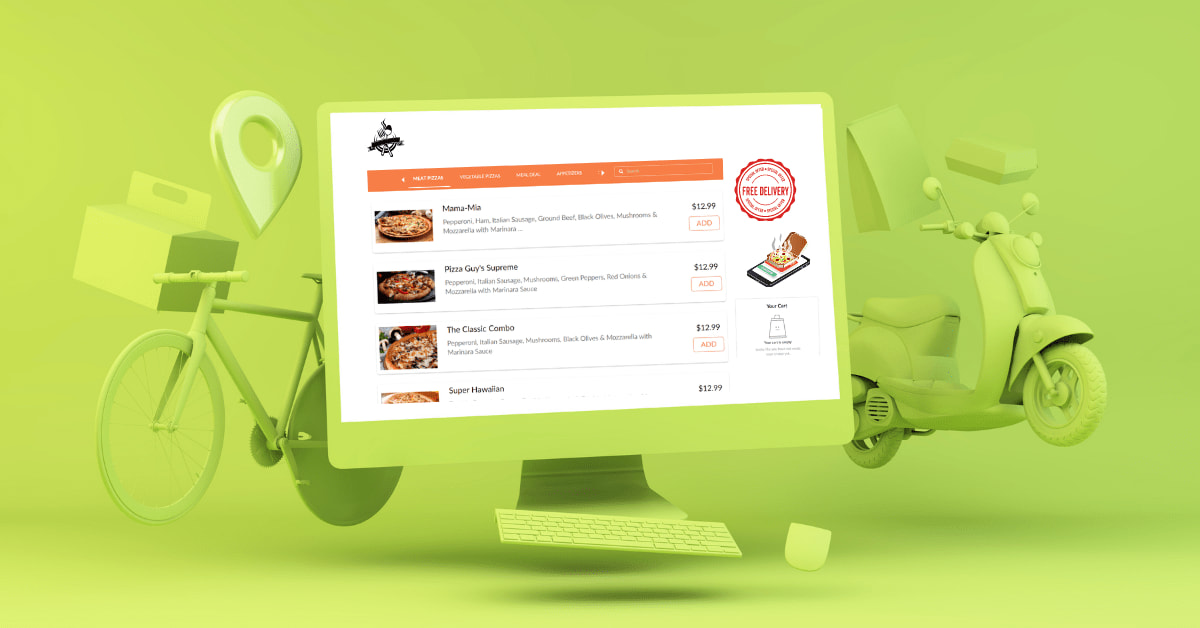
.png)
